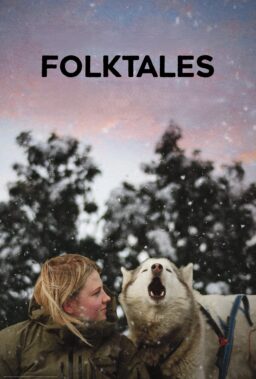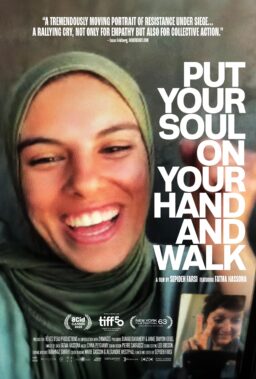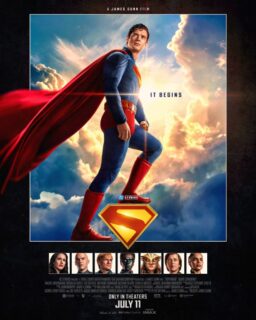March arrives chilly and haunted at Film Forum in the shambling, wraithlike form of a two-week celebration of over 90 years of masterpieces of Japanese Horror. Exquisitely-curated and shepherded in collaboration with the Japan Foundation, these screenings, many on 35mm prints, represent a nation’s specific dysfunctions from the silent era all the way through into the twenty-first century. If you live in the area and have the time, not a one of these titles goes unrecommended – but if you have limited time and resources, shoot for the screenings of the lesser-known, seldom-programmed treasures in the confidence that all-time masterpieces like Kaneto Shindō’s “Onibaba” (1964) and “Kuroneko” (1968), Masaki Kobayashi’s “Kwaidan” (1964), Kenji Mizoguchi’s “Ugetsu” (1953) and Nobuo Nakagawa’s “Jigoku” (1960) will make their rounds again sooner rather than later. Still, the chance to see any of these films on 35mm is difficult to resist. Japanese horror from this period is not only renowned for its sober frights, but for the visceral beauty of its meticulous cinematography.
Given that, I’ve never even heard of anyone screening Nakagawa’s “The Ghost of Yotsuya” (1959) in a theater, much less on a 35mm print. A glorious haunting based around sexual jealousy, adultery and vengeance, and the vanity of the reflected image, Nakagawa fashions a suffocating series of social entrapments before events spiral into still-upsetting body horror and righteous supernatural violence. Shot by the great Tadashi Nishimoto, it would be a brilliant companion piece to Hajime Sato’s “Goke, Body Snatcher from Hell” (1968) or Mario Bava’s “Planet of the Vampires” (1965). A true rarity. A gem.
Less rare but shockingly contemporary is Hiroshi Teshigahara’s “The Face of Another” (1966), the third of four of the director’s collaborations with novelist Kōbō Abe that each find horror in the essential adaptability of man. What’s more horrifying, after all, than the extent to which one can disassociate themselves from the horror of the world? In this one, a nondescript working man (Abe and Teshigahara’s favorite subject) is badly disfigured in an accident and, in despair, begins wearing a prosthetic mask. His morality immediately shifts along with his appearance and in one of the great shock moments in Japanese horror, he realizes that everyone around him has also been fitted with a mask. Everyone is free from themselves, you see, and when everyone is free, there are no longer any boundaries between civilization and savagery.

If you’re looking for something a little less, shall we say, polite, can I recommend the mad films of Teruo Ishii? Film Forum is presenting two of his films on DCP starting with “Blind Woman’s Curse” (1970) and ending with the notorious “Horrors of Malformed Men” (1969). Both are delightfully skeezy productions skating the line between exploitation horror, pinku sexploitation, yakuza and samurai genres with a heedless, breakneck disregard for decorum or, when the dust settles, much sense. “Blind Woman’s Curse” stars “Lady Snowblood/Female Prisoner Scorpion” herself Meiko Kaji as the head of a vicious gang who, after blinding a rival in a swordfight, earns herself a vengeful demon cat and a blind archenemy. A sendup in some ways of the revered Zatoichi series and, in others, of Amicus horror films, “Blind Woman’s Curse” is action-packed, gory, and exceptionally stylish. It’s either your taste or not – but you won’t know until you go.
Once hooked, catch Ishii’s masterpiece “Horrors of Malformed Men” (1969) in which a medical student unjustly committed to an asylum escapes by assuming a dead man’s identity before traveling to essentially the Island of Dr. Moreau. That’s right. It is the very definition of indescribable, an explosion of Japanese post-war anxiety that unspools in exactly the unhinged way of a fever dream or nightmare. David Lynch has nothing on Ishii. Easily dismissed as an experimental film more interested in provocation than plot, what you’ll find instead with “Horrors of Malformed Men” is a fascinating take on Dante’s “Inferno” where our avatar is led into a psychosexual maelstrom of self-loathing expressed through physical deformity, sexual perversion and what will likely be a permanent suspicion of and revulsion for crabs.
All of this without mentioning a double-feature of Kiyoshi Kurosawa masterworks in seminal serial killer film “Cure” (1997) and what still might be the most accurate examination of the terrors of the Internet age in “Pulse” (2001) in which there’s not just a ghost in the machine, but in the world wide web. You could catch a pair of Takashi Miike’s extreme pieces in the progressive sexual politics of “Audition” (1999) and the decidedly more gonzo representations of the same in his manga-adaptation “Ichi the Killer” (2001); or Hideo Nakata’s pathbreaking-to-the-West pair of J-horror flicks (both instantly adapted into English-language versions) “Ringu” (1998) and “Dark Water” (2002). But if you’ve only saved enough for one last trip to the dark side of the Rising Sun, check out Yasuzō Masumura’s towering, magisterial “Blind Beast” (1969) in which a blind sculptor kidnaps a model and imprisons her in a warehouse housing his life’s work. It’s the chittering child of madness, delivered with a steady and thoughtful hand, of Charlie Kaufman’s “Synecdoche, NY” (2008), Koji Wakamatsu’s “Violated Angels” (1967) and Liliana Cavani’s “The Night Porter” (1975). It carries with it a strong critique of how men see women as somehow less than the sum of their parts and is just one highlight in a festival that seems to be composed entirely of highlights. Check it out.












